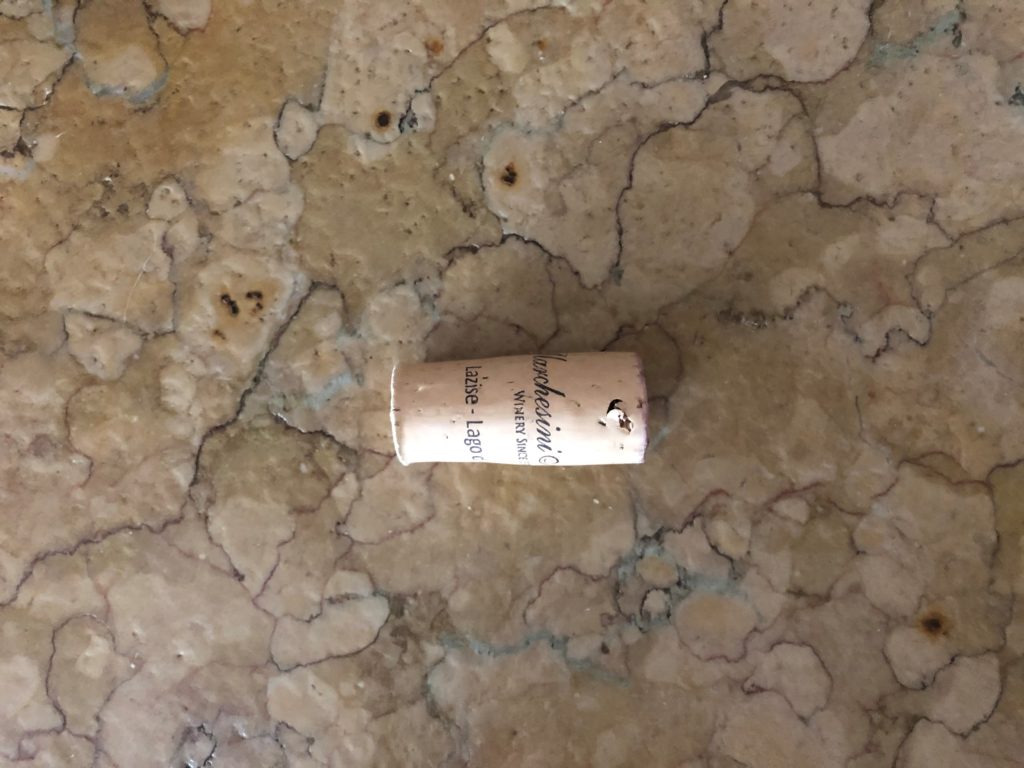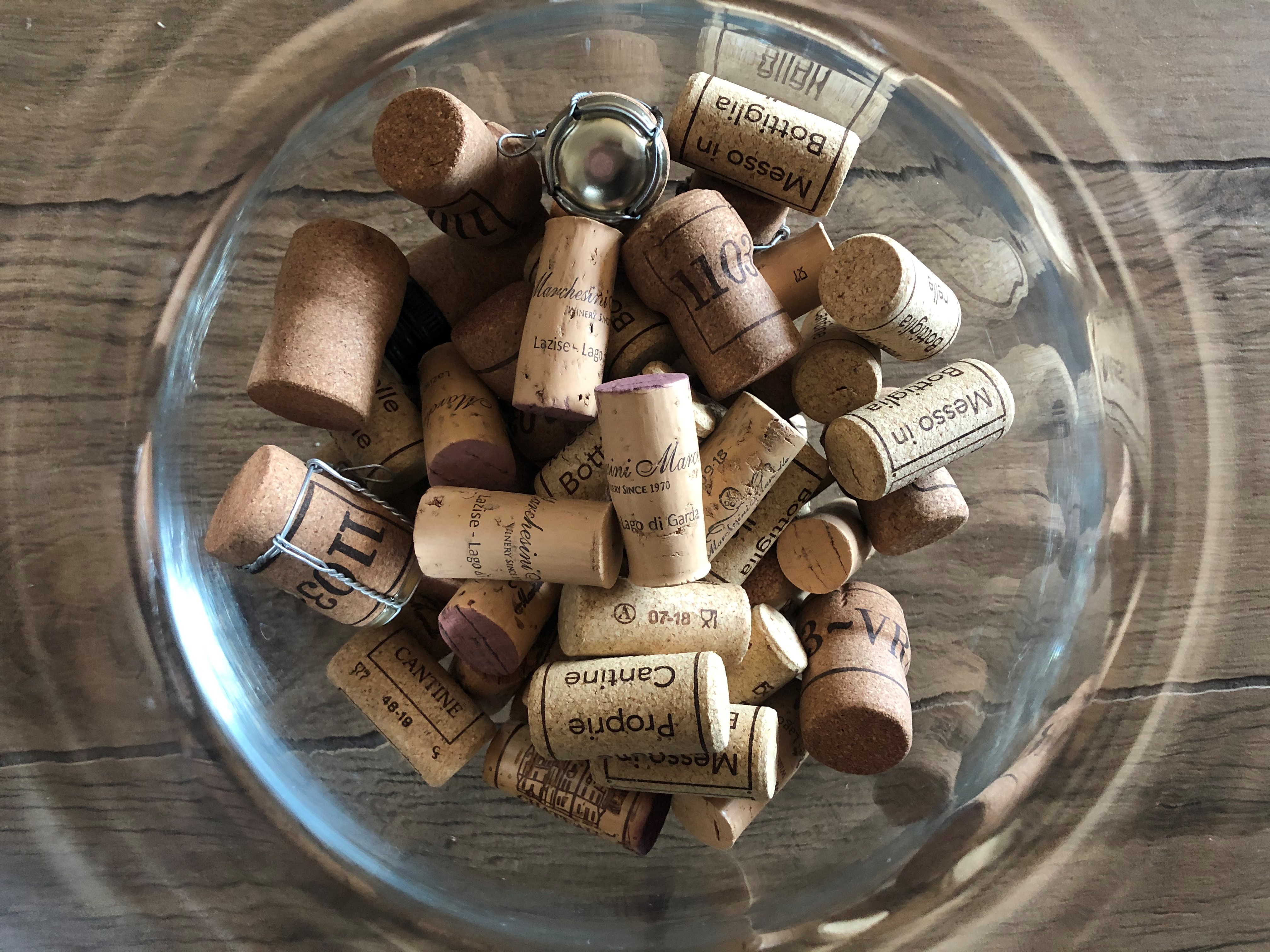A cork is not just the thing we need to open before enjoying a bottle of wine. The cork is actually of fundamental importance for the correct storage and the evolution of wine. What types of wine corks are commercially available? What’s the best type? Let’s put some light on the subject.
Wine oxygenation: how does it take place?
Let’s start by understanding that the concept of oxygenation is like a double-edged sword for wine: on one hand it helps to improve its organoleptic qualities but it must be dosed (through the stopper) according to the type of wine that we want to obtain.
Wine is something that is “alive” and constantly evolving. The substances inside react, blend and mix over time in a completely natural way and the oxygen plays a very important oxidising role in this by accelerating these reactions.
Between 1989 and 1993 the French winegrower Patrick Ducourmau developed a technique of micro oxygenation of wine which provides for the administration of small quantities of oxygen in a slow and continuous way through the walls of the barriques of the barrel or through a special machine, called a micro-oxygenator. This procedure avoids the excessively reduced phenomena and significantly reduces the onset of the hydrogen sulphide, which is what gives the wine an aftertaste of rotten eggs.
Oxygen therefore, plays a very important and at the same time delicate role. The decision on how much to pass between the outside and the inside of the bottle is down to the producer who, based on the amount of oxygen that filters into the bottle, will therefore, be able to hypothesise its evolution during the ageing of the wine.
The cork is fundamental in order to establish how much oxygen passes.
3 types of wine corks

1) The wine cork stopper is a natural porous stopper that allows the (slow) interchange of oxygen (the so called “micro-oxygenation”). How much oxygen? This is down to the producer who decides this when choosing the type of cork.
By studying the specifics contained in the technical data sheets and as winegrowers we have information at our disposal that allows us to perfectly know how the wine will evolve during the ageing of the wine in the bottle.
The competence of the producer combined with all the information given by the cap manufacturers, obviously play a fundamental role on the finished product.
Without going into technicalities, a cork stopper is perfect for wines that need to age in the bottle in order to complete the evolution of the wine and become one of the great wines that both the producer and the customer expect it to be.
When you say: “the wine is corked”
The greatest risk for this type of cork stopper is however, the hint of the wine being corked given by the so-called trichloranisole (TCA). This happens when the plant from which the cork comes from is attacked by a sort of fungus (the very common chiodino): this gives the wine a hint of damp cellar, moody paper and the so-called “wine is corked”. Even if you use the certified corks, the ones that are checked and smelled one by one, this problem still may arise.
Sometimes, when wine is stored in a particularly humid and hot room, this also favours the reproduction of microorganisms that can cause unpleasant changes in the past (for example anisole).
Please, read this post regarding on how to conserve and store wines.

2) This is why many wineries have replaced the traditional cork with a micro-granulated cork (or synthetic cork). It is a technical type composed of micro granules of cork and plastic microspheres, which allows the wine to maintain its freshness and prevent oxidation.
This type of cork is excellent for young wines and especially for rose wines. We for example, use this type of cork for our Bardolino Chiaretto and Bardolino DOC.

3) Finally, there is the screw or Stelvin cap which has a plastic membrane inside that makes the seal airtight, thus avoiding any passing of oxygen. This “definitive” sealing is good for young wines. The wine will however, need to take some air when it is opened in order to promote oxygenation. In our opinion this is the perfect type of cap meaning that the wine can maintain both the colour and aromas of our Rose wine, keeping them exactly as they were when they were put in the bottle. The screw cap represents the best solution for wines that are ready to drink (especially for rose wines), but the choice between cork and screw cap is often an emotional issue. The gesture of opening a bottle and hearing that ‘pop’ is for many synonymous of tradition and poetry.
The screw cap maybe less romantic but it is definitely more concrete, it gives a guarantee of the quality of what is inside the bottle.
What type of corks do we use for the Marchesini wines?
Our young wines, such as Sparkling rose, Bardolino and the Santi wines are bottled with both the technical cork and the screw cap type in order to satisfy the needs of the market. This is because in reality there is no right or wrong type of cap or cork.
We believe that the correct solution comes from a carefully studied choice of the producer who, through the choice of cork he uses, tells us what kind of evolution he expects from the wine. Considerations are taken on the basis of the characteristics of the grapes and the processing method adopted.
For wines that last longer (San Fermo, Nini and Pinot Grigio) we prefer a certified cork that has been carefully selected and smelled one by one to check its quality. Therefore, if you find the wine has the strange smell and taste as if a bottle is corked then we will happily change it for you.
Now you just have to taste the wines to understand the difference between each bottle and the technical corks or screw caps. You can purchase all our wines at our winery in Lazise.



